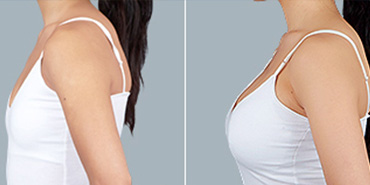
How To Know If Your Breast Implant Has Flipped Or Rotated Inside Your Breast?
How To Know If Your Breast Implant Has Flipped Or Rotated Inside Your Breast?
Breast augmentation has gained a lot of popularity over the years. The reason for that is, just by increasing the size of your breasts can immediately enhance your body shape. When you achieve more symmetrical breasts, you will feel more confident.
This sought-out procedure includes inserting silicone implants in your breast pockets. But the only downside to it all is that sometimes they can flip front to back such as a pancake, anterior to posterior 180 degrees, pivot like a door opening, or rotate like a wheel. You certainly don’t want any of that happening.
Let’s dig deeper into it here;
What Are The Chances Of You Experiencing It?
Although it’s not mostly common but also not rare to experience malrotation. Notably, about 3% to 14% cases have been reported. The reason for that probably is that in the past both saline and silicone implants were relatively soft and malleable.
So, it was hard to detect any difference in the overall shape of the breast as their contour would adjust after flipping.
But, in the present times, you can easily detect any difference in the contour in time. Wondering how? This is so due to the recent generation of form stable highly cohesive gel breast implants.
Reasons Leading To Malrotation:
Excited to show your new look to your friends? Bear in mind that not following your surgeon’s instructions will increase your chances of getting your implants flipped. We suggest that take a look at these factors so that you can take care of yourself properly.
Trauma To The Breast:
Enduring any type of trauma to your breast implants be it in a sporting activity or accident, will increase your chances of flipping them.
Insufficient Post-Operative Rest:
As a matter of fact, every surgical procedure requires rest. Notably, overuse of your upper chest muscles immediately after the breast augmentation procedure can also become the cause of malrotation.
It is advisable to avoid any vigorous breast massages until your surgeon gives you the green light.
Capsular Contracture:
After the surgery when your body starts healing, they will form capsular scar tissue around the breast implant site. But when the scarring starts becoming intense and causes chronic pain, you develop capsular contracture.
It forms a thick and firm layer that starts squeezing your breast implants eventually causing them to flip. This is a serious condition that will need medical attention immediately.
Large Implant Pocket:
In order to insert the implants, the surgeon creates a breast pocket. However, if your breast pockets get too large, your implants will have more room to rotate or move. Large pockets could also be due to gravity taking its toll, lactation, aging, or even tissue factors such as stretching or thinning of the breast skin.
Breast malrotation can cause all sorts of complications related to asymmetry and deformity and requires an operation to correct or stop them from getting worse.
How Can You Tell?
It depends on which type of implants were inserted in the breast pockets. For example, it is harder to detect any difference in the round breast implants as they keep their shape despite being in different positions and directions.
Routine imaging studies can detect any repositioning so make sure to get it done after your surgery. In fact, your surgeon would also recommend them.
However, tear-drop-shaped implants are easier to detect as they mimic the natural anatomic shape of the breast. They are more noticeable as they hold up their shape no matter in which position they are. They will feel:
- Different to touch
- Visually different when compared with each other
- No longer symmetrical
- Discomforting while lying down or standing up.
How Can They Be Diagnosed?
As mentioned before, clinically they can be diagnosed from their asymmetrical shape. The patient can self-describe them to the surgeon or the surgeon can also diagnose this by conducting a proper physical exam.
Moreover, the suggestion is to go for Ultrasound or MRI to find out the exact position of your implants for sure. Three years after the procedure is done and every two years after that are recommended to rule out any chances of developing malrotation.
What’s more? Advanced technology includes inserting Motiva Smooth Silk (MSS) breast implants that incorporate a radio frequency identification device (RFID). When the implants get displaced or change their position, this technology allows detection of any change precisely.
Is It Dangerous?
This condition is not life-threatening but no one would like to live with it after getting a breast augmentation. It will surely feel uncomfortable but you would also have to live with the unsymmetrical appearance.
Though you might experience discomfort you will definitely not feel pain except in trauma or capsular contracture. That is one of the reasons they often go undetected.
How To Avoid Flipping Or Malrotation Of Breast Implants?
Precaution is always better than looking for a solution. Your chances of getting your implants flipped will decrease when you will follow your surgeon’s instructions and recommendations.
Last but not the least, choosing the right surgeon can minimize the risk of malrotation. Dr. Arif Hussain is not only a well-qualified cosmetic surgeon but a seasoned one too who has successfully performed hundreds of breast implants in the past.
Book your appointment today to get the best treatment in the town!




